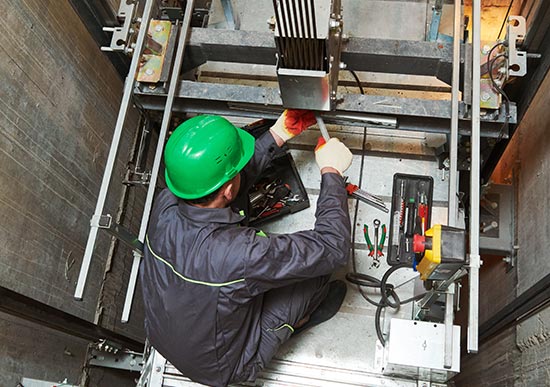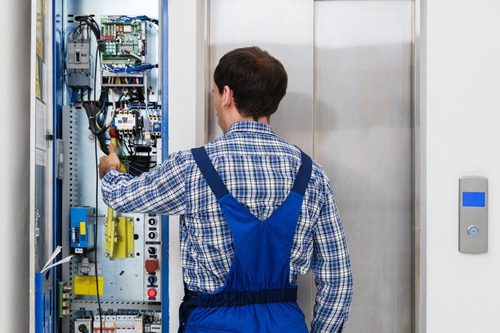Understanding System Lift Dimensions: Essential for Reliable Lift Service
Understanding System Lift Dimensions: Essential for Reliable Lift Service
Blog Article
A Thorough Technique to Enhancing Performance With Strategic Lift Repair Service Techniques
A calculated and systematic method to raise repair work and maintenance is vital to maximize performance and minimize downtime. By addressing common lift problems, applying positive upkeep steps, and establishing targeted repair work strategies, centers can optimize their lift systems to run at peak efficiency levels.
Significance of Lift Efficiency Optimization
Recognizing the value of optimizing lift performance is vital for ensuring trusted and effective vertical transport systems in numerous buildings and structures. Lifts are important elements of modern framework, supplying vertical flexibility for residents and products within structures of differing heights. By maximizing lift efficiency, building proprietors and facility managers can enhance individual experience, enhance power performance, and increase general operational efficiency.
Reliable lift efficiency optimization includes various elements, including rate, capacity, energy maintenance, consumption, and safety and security demands. Effectively maximized lifts can lower wait times for customers, particularly in high-traffic buildings, causing boosted satisfaction and productivity. In addition, optimized lifts add to energy savings by making use of innovative control systems and innovations that reduce power usage without endangering performance.

Identifying Common Lift Issues
Determining usual lift problems is essential for maintaining the functional effectiveness and safety and security of upright transportation systems in structures. This problem can be a measure of issues with the lift's electric motor, control system, or also the positioning of the lift auto.
One more widespread lift concern is odd sounds originating from the lift shaft or machinery space. These noises can vary from grinding or scratching audios to loud clunking noises, every one of which might indicate underlying mechanical problems that require immediate attention. Additionally, constant door malfunctions, such as doors not opening or closing correctly, can interfere with the smooth circulation of guests and position security dangers.
Implementing Positive Upkeep Measures
To optimize the performance and durability of lift systems, positive maintenance actions play an essential duty in ensuring operational reliability and safety and security. lift service company. Executing aggressive upkeep includes systematically inspecting, maintenance, and fixing parts prior to they stop working, therefore preventing costly downtime and potential security threats. Regularly set up assessments can assist identify minor problems prior to they intensify into significant troubles, eventually prolonging the lifespan of lift systems
One key element of proactive maintenance is creating a comprehensive upkeep schedule based on supplier referrals and industry ideal methods. This timetable must lay out tasks such as lubrication, placement checks, and component replacements company website at defined intervals. Additionally, applying problem surveillance strategies, such as vibration evaluation and thermal imaging, can assist identify early indications of wear or breakdown.
Additionally, training upkeep team on correct assessment methods and preventive maintenance procedures is important for the successful application of positive maintenance actions. By cultivating a culture of positive maintenance within an organization, lift systems can operate at peak performance levels, reducing disruptions and guaranteeing the safety of individuals.
Establishing Targeted Repair Strategies
Upon analyzing the maintenance records and performance information, the design group can establish targeted fixing plans to maximize and resolve details concerns lift system performance. These repair work plans are tailored to the determined problems, making sure that resources are concentrated on settling vital problems successfully. By prioritizing fixings based upon their influence on efficiency and security, the targeted repair strategies assist minimize downtime and maintenance expenses while making the most of the lift system's integrity.
Establishing these plans involves an extensive evaluation of the lift system elements, including electric motors, wires, brakes, and control systems. Via this thorough assessment, the engineering team can identify the source of any breakdowns or destruction in performance. This info is then made use of to produce a roadmap for the repair service process, outlining the needed steps, timeline, and sources needed to deal with each concern successfully.
In addition, targeted fixing plans may consist of preventative steps to improve the lift system's durability and performance. By proactively addressing potential problems prior to they intensify, these plans add to the overall performance and security of the lift system.
Utilizing Data-Driven Insights
Using the power of data-driven insights is essential in maximizing lift system performance and maintenance effectiveness. These anticipating maintenance approaches assist prevent unexpected failures, minimize downtime, and prolong the life-span of lift systems.

Conclusion
To conclude, optimizing lift efficiency is essential for ensuring performance and safety in buildings. By identifying typical lift issues, executing aggressive maintenance steps, creating targeted repair service strategies, and using data-driven their website understandings, companies can improve performance and minimize downtime. It is necessary to take an extensive approach to lift repair techniques to optimize functional efficiency and make sure the durability of lift systems.
By addressing usual lift issues, executing aggressive upkeep steps, and establishing targeted repair plans, centers can enhance their lift systems to operate at peak efficiency degrees.Another prevalent lift issue is odd sounds emanating from the lift shaft or machinery area.Upon examining the upkeep records and efficiency data, the design group can create targeted repair plans to address details problems and optimize lift system functionality. By focusing on repair work based on their influence on performance and safety, the targeted repair service strategies aid minimize downtime and upkeep prices while optimizing the lift system's reliability.
It is essential to take a comprehensive technique to raise repair service methods to optimize operational efficiency and make certain the long life of lift systems.
Report this page